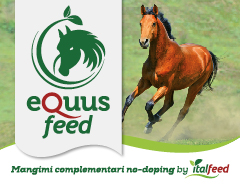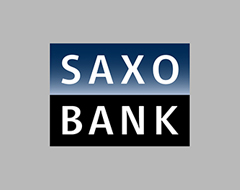How Japan changed the face of world bloodstock
Japan is today widely regarded as the paragon of how racing and breeding should be done.
Whether it’s the country’s focus on achievement over traditional Classic distances over multiple seasons, its state-of-the-art facilities, its stupendous levels of prize-money, its success in the top races around the world or its fan engagement, it is an example to us all.
That hasn’t always been the case, though. Quite the opposite, in fact.
For years, Japanese racing was closed to foreign competition and the country was best known in other jurisdictions as a buyer of colts who weren’t deemed good enough to stand at stud in their country of birth, or who had been given a chance and had not come up to scratch.
When Japan did open its doors to overseas-trained horses, with the inauguration of the Japan Cup in 1981, the home team were humbled. Mairzy Doates, a five-year-old mare who had failed to win a Grade 1 race in the US in her previous 31 starts, broke the track record when she led home three other North American challengers.
Another invitee from the US, Half Iced, won the second running and the late Frank Dunne’s tough mare Stanerra took the third for Ireland. The Japanese won the third and fourth runnings with Katsuragi Ace and Symboli Rudolf, but they didn’t keep the prize at home again until 1992.
Enough was enough. Japanese breeders, led by the Yoshida family, took urgent action to remedy the situation of their horses being second-class citizens on the world stage. No longer would they take other countries’ cast-offs; if they were going to bring the domestic product up to scratch they would require the best breeding stock.
An enormous spending spree on importing winners of some of the best races in Europe and North America began. For example, all five Derby winners between 1991 and 1995 – Generous, Dr Devious, Commander In Chief, Erhaab and Lammtarra – stood in Japan at one time or another, as did 1980s and 1990s Arc winners such as Dancing Brave, Tony Bin, Carroll House, Carnegie and Helissio.
Winners of the most prestigious US prizes were also sought after, and it was Zenya Yoshida’s purchase of the 1989 Kentucky Derby, Preakness Stakes and Breeders’ Cup Classic winner, and ultimately horse of the year, Sunday Silence that changed the direction of Japanese breeding.
Before Sunday Silence took Japan by storm with his progeny conceived at the Yoshidas’ Shadai stallion station, the country’s horsemen had upped their game in terms of training techniques and nutritional advances, but with horses sourced as youngsters from the US.
Seeking The Pearl, a daughter of Seeking The Gold bred in Virginia by Lazy Lane Stables, became the first Japanese-trained horse to win a top-flight race outside of Japan’s borders a quarter of a century ago this year, when Hideyuki Mori took her to France to capture the Prix Maurice de Gheest.
Only a week later Taiki Shuttle, a son of Devil’s Bag bred by Taiki Farm but in Kentucky, took the scalps of Among Men and Cape Cross to land the Prix Jacques le Marois for trainer Kazuo Fujisawa.
Before the end of the millennium, Mori returned to Europe to win the Prix de l’Abbaye and July Cup with Agnes World, a Calumet Farm-bred son of Danzig and Musidora Stakes third Mysteries, and Yoshitaka Ninomiya claimed successes in the Grand Prix de Saint-Cloud and Prix Foy, and an agonising second to Montjeu in the Arc, with El Condor Pasa, a son of Kingmambo bred in Kentucky by Takashi Watanabe.
Japan’s international rivals could be forgiven for still feeling complacent at this point, as the country was relying on North American and European bloodlines to excel. But that was all about to change.
In 2005 Cesario became the first Japanese-bred, Japanese-trained horse to earn Grade 1 laurels abroad, when running out a four-length winner of the Hollywood Oaks over high-class fillies Melhor Ainda, Singhalese and Luas Line. She later became a powerful broodmare, producing Grade 1 winners Epiphaneia (sire of top-flight scorers Circle Of Life, Daring Tact and Efforia), Leontes (sire of Saudi Derby winner Pink Kamehameha) and Saturnalia (who has first-crop yearlings).
Cesario hailed from the second crop of Japan Derby and Japan Cup victor Special Week, one of the numerous Grade 1 winners who helped their father Sunday Silence to 13 consecutive Japanese sire titles.
Just as in Europe, where many must have thought they would never see the like of the all-conquering Sadler’s Wells again, but did when his son Galileo proved as good if not better, so there was a smooth passing of the baton in Japan, where Sunday Silence’s outstanding son Deep Impact became equally dominant. He is on 11 successive domestic championships, and counting.
Japan now had its own supersires, plus a few other good ones such as King Kamehameha, along with a well-stocked arsenal of global blue-chip racemares and producers, ever improving rearing and training methods, and renewed confidence brought by Cesario’s Stateside success; so its horsemen were able to rely on their own stock from the noughties onwards, and take on the world’s best with it.
In 2006 Heart’s Cry finished third to Hurricane Run in the King George, beaten a length in total, and the widely adored Deep Impact filled the same position behind Rail Link in the Arc after causing a sensation at Longchamp, his many Japanese fans sending him off at long odds-on. At the end of that year the Japanese stablemates Delta Blues and Pop Rock finished first and second in the Melbourne Cup.
While Heart’s Cry and Deep Impact were by Sunday Silence, Delta Blues was by Sunday Silence’s son Dance In The Dark and Pop Rock was by Helissio.
It was, perhaps, a breakthrough year for Japanese-bred horses in international competition.
Since then, the likes of JPN suffix-holders A Shin Hikari and Deirdre have won elite races in Europe, while Nakayama Festa and Orfevre have run second in the holy grail of the Arc. Truth be told, the Japanese could probably win far more in Europe if they wanted to, but they would have to be motivated by prestige rather than prize-money to take part.
|
Pictured below: Sunday Silence
|
Success around the globe with Japanese-trained runners
Japanese runners took off in Australia after a hiatus caused by the equine influenza outbreak in the year after Delta Blues and Pop Rock’s Flemington one-two. Admire Rakti and Mer De Glace won the Caulfield Cup, Lys Gracieux claimed the Cox Plate and Real Impact took the George Ryder. Japanese-breds Brave Smash, Fierce Impact and Tosen Stardom also won Australian Group 1s for local trainers.
Japanese challengers haven’t made a significant impact on the US Triple Crown races but they made a major breakthrough at the Breeders’ Cup at Del Mar in 2021 when Marche Lorraine landed the DIstaff and Loves Only You won the Filly & Mare Turf.
Japan is a particularly commanding presence at the lavishly endowed middle-eastern racing festivals.
At the Dubai World Cup meeting they have won big pots with the likes of Admire Moon, Almond Eye, Crown Pride, Gentildonna, Heart’s Cry, Just A Way, Lani, Panthalassa, Real Steel, Shahryar and Vivlos, and matters reached a head at Meydan this year when Ushba Tesoro won the Dubai World Cup, Equinox blew the opposition away in the Sheema Classic and Derma Sotogake scored in the UAE Derby. Equinox is still unsurpassed as the highest-rated horse anywhere in the world this year.
Japan also made its presence felt in no uncertain terms at the Saudi Cup meeting at Riyadh earlier in 2023, with Panthalassa winning the feature race worth £8m and Bathrat Leon and Silver Sonic picking up valuable races on the undercard.
|
Tapping into Japanese bloodlines with Deep Impact
Japan’s success became so great that breeders around the world started to need to tap into Japanese bloodlines, rather than vice versa, as the case was as little as 25 years ago.
There were brief flirtations with Sunday Silence, with Godolphin’s 1,000 Guineas runner-up Sundrop being among the more memorable results, but it was Deep Impact, with his proven European form and comfortingly familiar female family (his dam Wind In Her Hair, a relation to Height Of Fashion, finished second in the Oaks), who everyone in Europe wanted.
The Wildenstein family got in early, going to the trouble of sending mares to Deep Impact at Shadai but being rewarded with Listed winner Barocci and Poule d’Essai des Pouliches heroine Beauty Parlour from his first and second crops. Chasemore Farm also bought some early foals and yearlings by Deep Impact in Japan and enjoyed a little success with those.
The Niarchos family were early adopters, too, and eventually got from him their Prix du Jockey Club hero Study Of Man, now a promising first-season sire based at Lanwades Stud.
As Deep Impact accumulated more and more Grade 1 winners at home, including the first three home in the Japanese 2,000 Guineas and Derby in 2016, as well as abroad, including A Shin Hikari, Gentildonna, Kizuna and Real Impact, he came more vividly on to Coolmore’s radar as a credible outcross for their many brilliant racemares by Galileo or other sons of Sadler’s Wells.
Logistics dictated that Coolmore could send only so many mares to Deep Impact each year, but they got a high strike-rate of success from the matings, with the likes of Fancy Blue, Saxon Warrior, September and Snowfall all winning big for the team.
Coolmore also got lucky in that Deep Impact covered only 24 mares in his injury-shortened last covering season in 2019 before his death aged 17, and yet they bred four of his final crop, including this year’s Derby, Irish Derby and Irish Champion Stakes winner Auguste Rodin, who is out of Galileo’s multiple Group 1-winning daughter Rhododendron.
The operation reportedly had to divert some of the mares they had in Japan to other stallions when Deep Impact’s health failed, leading to Fluff, a winning Galileo full-sister to Saxon Warrior’s dam Maybe, being covered by Heart’s Cry that year. The fact that the result was last Saturday’s impressive St Leger winner Continuous might give them food for thought about using a wider range of Japanese sires in future.
There is no doubt about it, Japan now holds a lot of the aces in world breeding.
In fact, the Japan Cup, which was rarely kept at home in its early years, hasn’t been won by a foreign visitor since the Luca Cumani-trained Alkaased in 2005.
Several international challengers have put up a good show, though, including Grand Glory, who has finished sixth and fifth in the last two editions, Idaho, who ran fifth behind Cheval Grand in 2017, and Iquitos, who stayed on into seventh behind Kitasan Black – future sire of the world-beating Equinox – in 2016.
Wouldn’t it be a delicious irony if it took the progeny of a Japanese sire for international owners and trainers to lift the Japan Cup again?
|
Pictured below: Deep Impact
|
Richest ever Japan Cup an attractive prospect for visitors
This year’s Japan Cup, the richest ever with total prize-money of around £6.4m, will be shown live in the UK and Ireland for the first time on Racing TV.
Last year’s race was the first in which new state-of-the-art quarantine facilities were available for international Japan Cup challengers at Tokyo racecourse and the contest attracted four raiders from Europe, three from France and one from Germany.
The new facilities reportedly produced a seamless process, with horses going directly from Tokyo airport to the quarantine facilities within the racecourse stables.
France’s Grand Glory did best of the foreign contingent in finishing sixth – beaten only a little more than four lengths – to the Ryan Moore-ridden Vela Azul.
That meant Grand Glory’s connections picked up a handsome £217,000 prize, while those of seventh-placed Onesto collected £190,000 and ninth home Tunnes £81,000.
This year, the prizes for finishing in the first ten in the Japan Cup are even more generous, and finishing in the same positions as those European venturers last year would bring in £235,000, £206,000 and £88,000, while the winner stands to collect £1.176m.
There are also bonuses, ranging from $3m (£2.42m) to the winner, down to $200,000 (£161,000) for those finishing fourth and below, for horses who have won one of 24 major international races this year.
Even horses who ran in a bonus race but did not win receive $100,000 (£80,500) if they take part in the Japan Cup.
These bonus races include the Derby, Prince of Wales’s Stakes, Irish Derby, Eclipse, King George, International, Irish Champion Stakes and Champion Stakes in Britain and Ireland as well as the Prix du Jockey Club, Grand Prix de Paris, Grand Prix de Saint-Cloud, Prix de l’Arc de Triomphe and Grosser Preis von Baden.
The Japan Cup, for three-year-olds and upwards, takes place on a 2,400m (1m4f) left-handed, turf course. Nominations for this year’s race close on Tuesday, October 3, two days after the Arc, and final declarations for the race, which will be staged on Sunday, November 26, are on Thursday, November 23. There is no nomination fee and the declaration fee is 300,000 Japanese yen (£1,639).
For further details, contact the Japan Racing Association London Representative office at 4th floor, 11 Argyll Street, London W1F 7TH; (office) 0207 437 5053; email jralon@jrauk.com
|
From left to right: Keiju Shiobara, Kanichi Kusano and Akinobu Ohno.
Find out more about entering this year’s Japan Cup
|
|
|
|
















